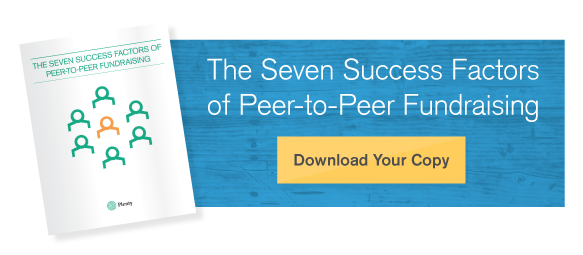Share this
Previous story
← Re-Believe In Your Nonprofit's Mission
 It happens every year. Right around Halloween, I slowly start to abandon many of my good habits and start thinking about how I’ll improve things next year, and by the end of the year I’ve accumulated a lengthy list of resolutions to tackle on January 1.
It happens every year. Right around Halloween, I slowly start to abandon many of my good habits and start thinking about how I’ll improve things next year, and by the end of the year I’ve accumulated a lengthy list of resolutions to tackle on January 1.
The New Year is a great excuse to set personal and professional goals. Take this opportunity in 2015 to start thinking about your peer-to-peer resolutions. The budgets are written and the goals are set, so you know what needs to be accomplished in 2015, but what good habits are you hoping to adopt that will improve your program this year?
Hopefully one of your resolutions is to increase the use of analytics in your nonprofit business plan. No matter how data-driven you are, there is always room to improve. You never cross the finish line when it comes to your program’s analytics because you can never know everything about your program and constituents, there is always more to uncover. And that’s ok. It is natural for your audience, the landscape, and the tools you use to constantly change. The key is to make sure your approach to analyzing data changes too.
So whether you’re just getting started or you’re already a whiz in Excel, here are a few tips for moving your analytics forward in the New Year:
1. Focus. The key to making analytics part of your organization’s culture is to keep it simple. If your reports track more than a handful of metrics, it’s overwhelming for your team to understand. To influence their behavior, you need to find the most important metrics that drive revenue. If you’ve already whittled your reports down to a successful handful, be sure to re-evaluate whether or not they are still the right metrics. Are there new trends in your program that you need to watch?
2. Take one step forward. As I mentioned earlier, there is no finish line with analytics. The key is to make progress. If you aren’t doing any analytics, make 2015 the year you get started. Pick a few key metrics (here are a few ideas) and start to run the numbers. If you are in the data all the time, use the New Year to dig into long-term trending with your key metrics. How have things changed over the last five or ten years? Are some metrics performing differently than others?
Your analytics and other professional resolutions for the New Year are just as important as finally signing up for that gym membership or learning how to use your juicer. But like any resolution, the key to using analytics successfully in peer-to-peer fundraising is to set small, achievable goals for yourself. By focusing, taking one step forward at a time, and making your key metrics meaningful to your team, you can transform your analytics from zero to hero in 2015.

These Related Stories

No Comments Yet
Let us know what you think